You may not find this terribly rewarding unless you're included here, so this is a good time for casual and random browsers to turn back before they get too caught up in the sweep and majesty of the proceedings and can't let go.
We're not based in Europe anymore, and we've struggled through the covid-19 lockdowns like everyone else, so we haven't set foot in Italy since February 2019. We've been making up for lost time with mad sightseeing, but in a few days we'll be grandly reuniting with Melvin and Choupette again, O Frabjous Day.
A valedictory walkabout on our last day in . . .
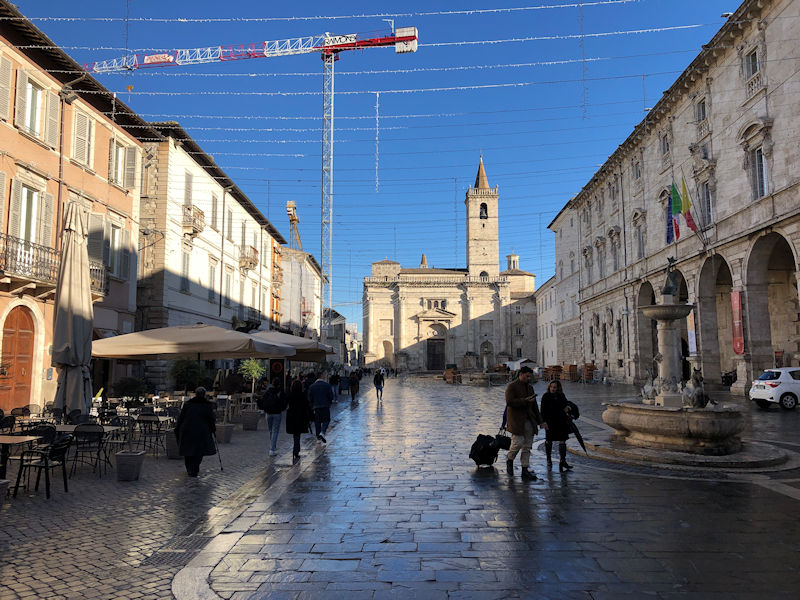
24 November: We're back for one more look at the Piazza Arringa before we have to leave tomorrow.

Ten days here, and we haven't yet mentioned the signature product and source of joy of Ascoli Piceno -- the Olive all'Ascolana. Those things in the photo, of course, are only indicative.
'One of the most-loved foods from Marche – and one of the best-known, too – olive ascolane or all’ascolana owe their name to the city of Ascoli Piceno. There, a special variety of soft, large green olives has been grown since Roman times, making for one of the finest specialties from the area. Olive ascolane are traditionally made using these fine local green olives, which are then stuffed with a meat filling, breaded and deep fried.' [Valeria Necchio]

Stocking up
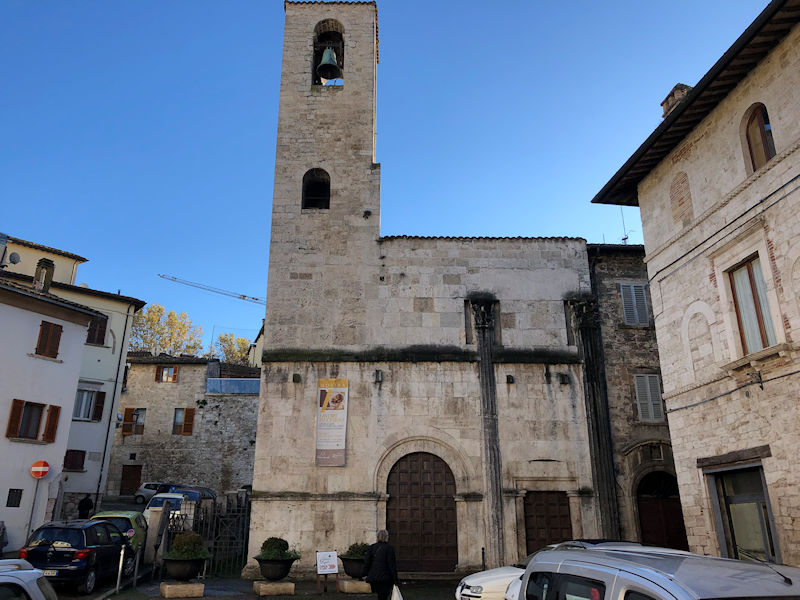
One last pass by the Church of St Gregory the Great, the 13th century church built over an Augustan era Roman temple . . .

. . . with its interesting work on the rear part of that wall: it's called Opus reticulatum and consists of shaped tufa stones with points driven into a cement matrix so that 'their square bases formed a diagonal pattern resembling a fishing net (reticulatum)' (from Roberto Piperno).

The road leading from the Chiesa di San Gregorio Magno to the Piazza Arringo is named the Via Tornasacco, which recalls the fact that Emperor Frederick II's soldiers in 1242, having breached the Porta Torricella above the Castellano river, were able to enter the city down the Via Castellano onto this street into the city centre, as they 'looted the houses and carried out a terrible massacre'.

We will now recreate the Emperor's soldiers' route in reverse. Skipping the looting and massacring parts.
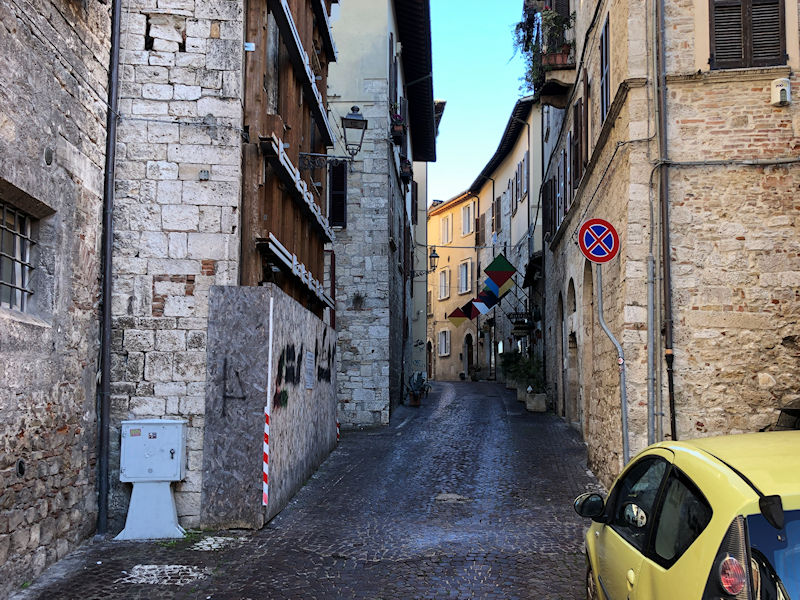
The Via Castellano towards the far edge of the old city

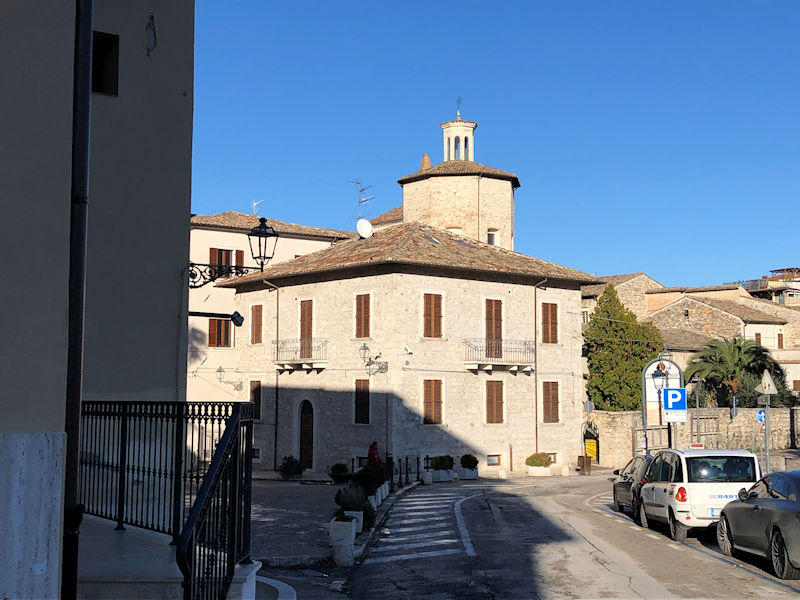
We've emerged onto the Lungo Castellano Sisto V, the ring road over the river, near where the Porta Torricella had been -- apparently the remains of the ancient gate can still be seen under the parapet in the old wall, but we didn't notice it.
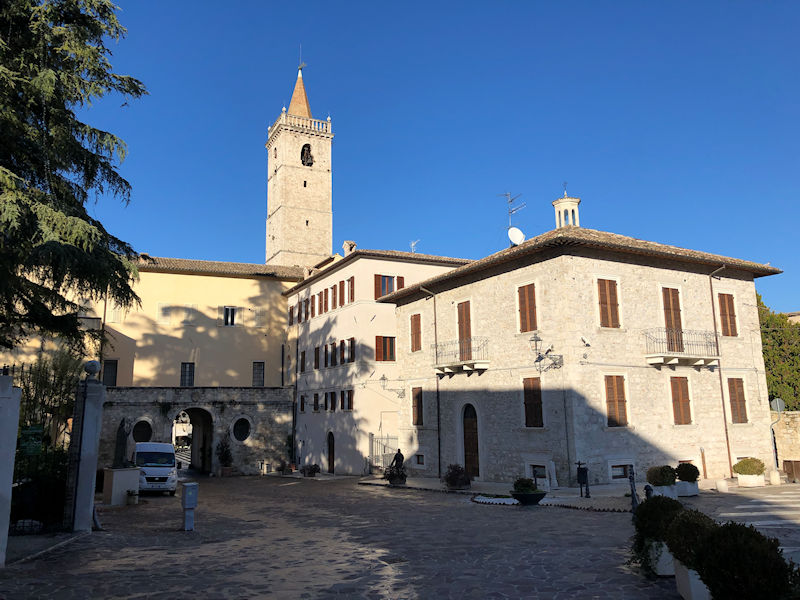
But since we're here now anyway, at the back of the bishops' palace, we'll stop in for a look at the episcopal garden, and then go down for a look at the river.

The Episcopal Gardens, in pretty good shape for late November

Umm . . . how cute

Very good (especially for late November)

Featuring the bishops' bell collection

By the entrance to the bishops' complex, this is the Nuovo Cineteatro Piceno, now showing . . .

. . . 'Wakanda Forever'.
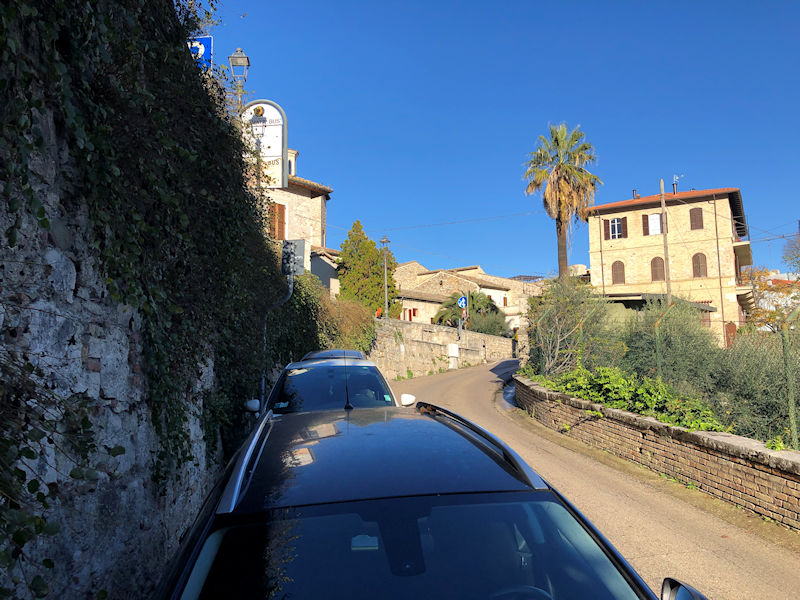
We're past whatever was the Porta Torricella and are on our way (retracing the imperial mercenaries' steps) down to the Castellano.

That's a modern bridge -- well, 'modern', not medieval -- over the river, but there are said to be visible remains of a medieval predecessor that would have led up to the Torricella gate. That's a large parking garage on the far side that likely helps to relieve some of the desperate car-crowding up in town.

That's the mighty river Castellano, with a something-or-other bridgey looking thing that isn't identifiable on Google Maps.
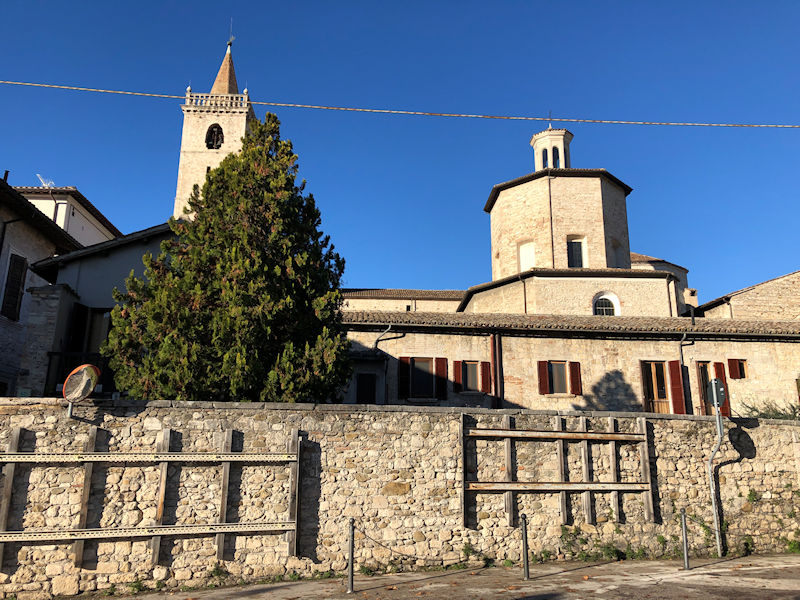
Back up the Via Porta Torricella to the Lungo ring road
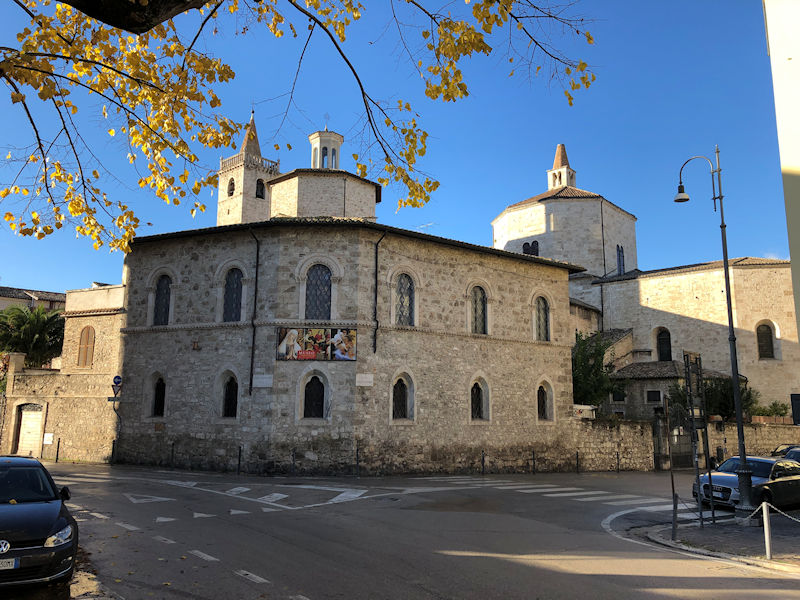
The back end of the cathedral complex -- the Lungo here seamlessly becomes the Viale Alcide de Gasperi and carries on . . .
[The road is named for the Christian Democrat Prime Minister of Italy, 1945 to 1953, the last PM of the Kingdom and first PM of the Republic.]

[genuinely sorry to miss it]

. . . carries on to join the Corso V. Emanuele across from the Chiesa di Santa Maria del Carmine, in this photo with at least a bit of the 17th century façade by the Roman architect Carlo Rainaldi showing. Not much . . . but a little bit.
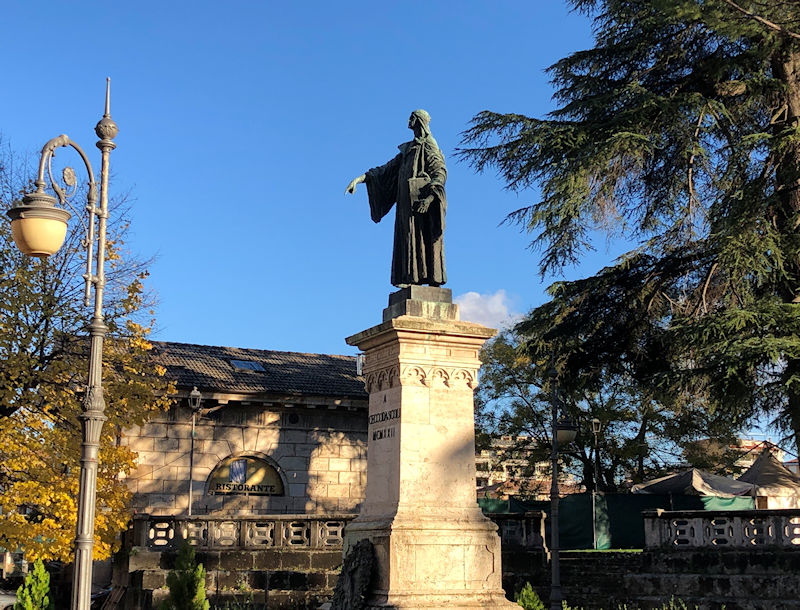
And there's the appropriately controversial learned genius Cecco d'Ascoli again, presiding over his own little memorial park.
[His real name was Francesco degli Stabili, ca. 1269-ex. 1327. Cecco, in Latin Cichus, is a familiar short form of Francesco. The lunar crater Cichus is named after this fellow; how's that for belated recognition?]

Crossing the Ponte Maggiore, just checking to make sure that the Forte Malatesta is still okay, on form.

One of several decorative fountains ('Acqua Non Potabile') at the far end of the modern bridge, where the suburbs seriously get under way.

A different look to the suburbs from that of the Historic Centre, but evidently prospering . . .

. . . helped along by amazing bargains at Maury's Magazzini (like toothpaste for half a euro!).

The rail station -- the departures board inside shows regular service to San Benedetto del Tronto on the coast, most extending on to Ancona to the north.

And whilst you're waiting for your train, how about having a go at the slots?

A free navette bus into the downtown, with the motto 'Ascoli, a story [or history] to discover'

One has crossed back over the Ponte Maggiore and divagated down along the Corso Mazzini with a project in mind. In the meantime, this is the Scuola Elementare Malaspina (with a cute sign on the front door reminding to wear covid masks).
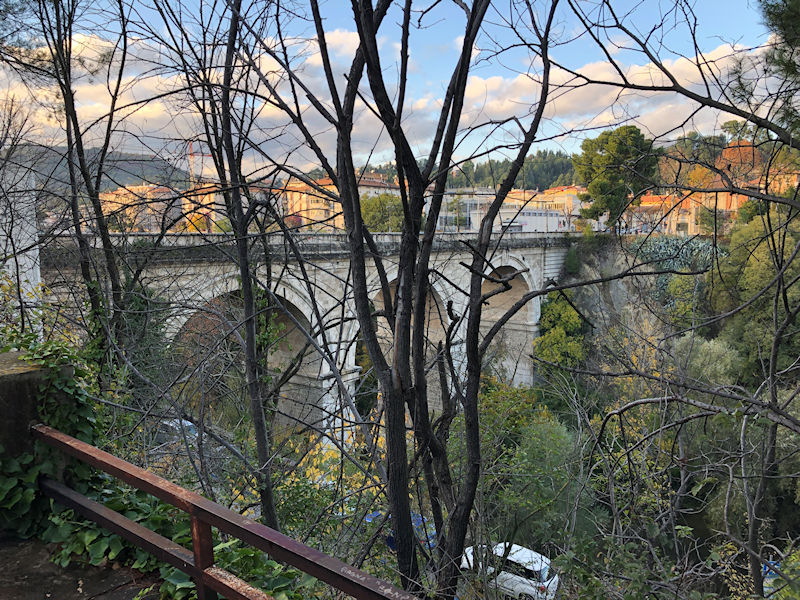
Here's the project, coming to fruition -- to get a look at the other major bridge into the downtown. This in fact is the modern Ponte Nuovo to and from a substantial northern suburb. But there seems to be some misunderstanding here.

That's the Ponte Nuovo with an elevator down to a road that runs along the riverside from the Ponte Maggiore to below us here and back up to the Porta Tufilla.

That's what we were promised and were looking for: the Ponte Tuffillo (now called the Ponte St Antonio), built in 1097 on the foundations of a Roman bridge, which they say are still partially visible under the nearer arch. It was restored in 1546 and got its present look by one of the Giosafattis in the 18th century.

The original bridge was serving this gateway into the city from this direction, built on a spur of tufa rock and therefore called the Porta Tufilla.

The modern bridge to the northeastern suburb

This iteration of the Porta Tufilla, one of the seven gates into the city, dates from 1552-1554, when the original gate was redesigned and the loggia was built on top for the sentries.
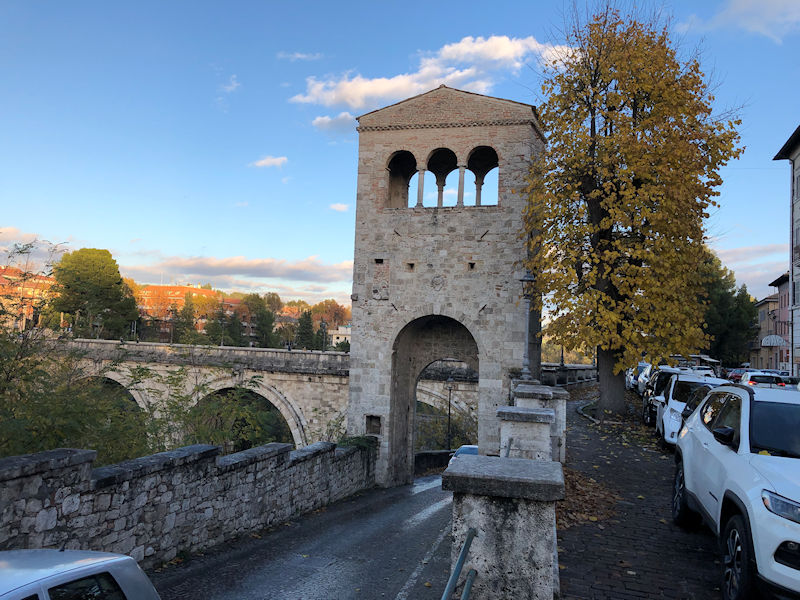

-- No, no, a little more to the left!
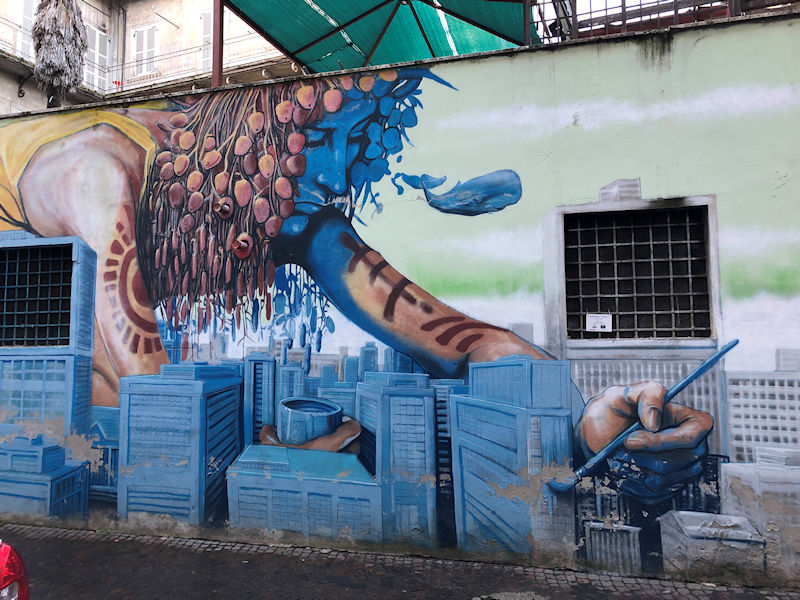
Everyone needs a hobby. This is an impressive one.

This is the Chiesa di Santa Maria Intervineas, which we never had a chance to investigate -- it was begun in the 13th century but much altered over time, with a nave and two aisles. The belltower is thought to be a recommissioning of a former private watchtower. A restoration in the early 1950s uncovered traces of 13th century frescoes. The Tigre market facing it would have been welcome to us but isn't required at the moment.

That's the back of the St Francis Church -- it's time finally to grab a quick look inside it.

Through the wonderful cloister alongside it, and a mournful glance at . . .

. . . our first favorite establishment here, until they went off on a two weeks' holiday.

Across from the church, this is the Teatro Ventido Basso, within which we almost lost one of our party after a piano recital.

The fine front door of the Chiesa di San Francesco (which some say was actually dedicated to John the Baptist, but since it was long administered by an order of Franciscans, tradition intervened).
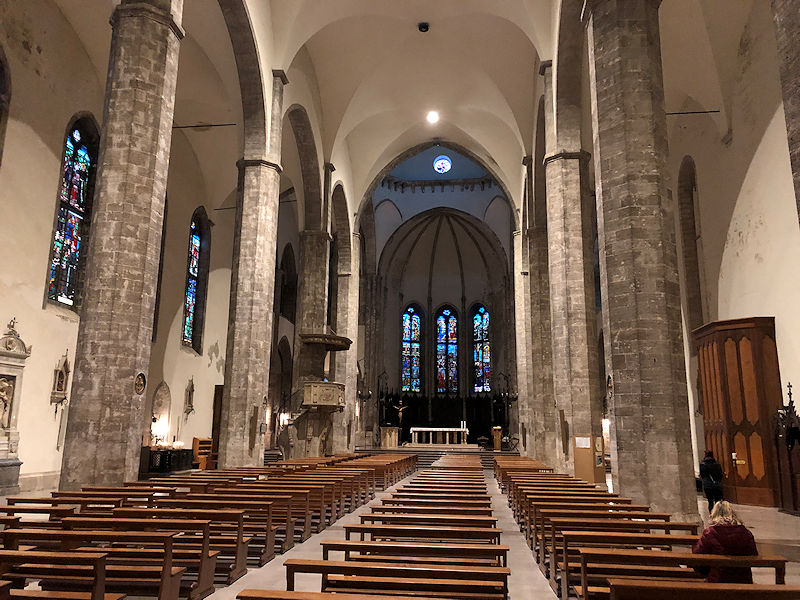
It's very nice. Clean, neat, all symmetrical. Now it's time for dinner.

Celebrating our last night here, we're back to the Ristorante Piccolo Teatro, which we liked very much and even . . .
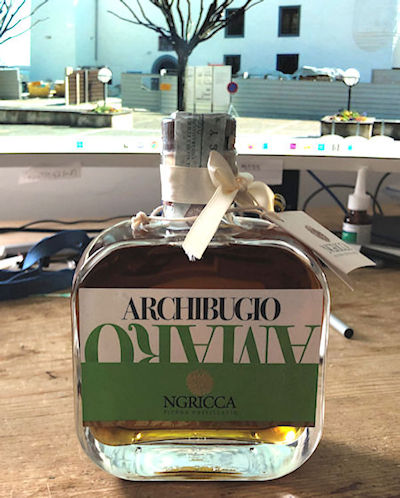
. . . bought a few bottles of the local amaro.

Back through the Piazza del Popolo to our last night at the very recommendable Palazzo Guiderocchi.
 Dwight Peck's personal website
Dwight Peck's personal website









































































